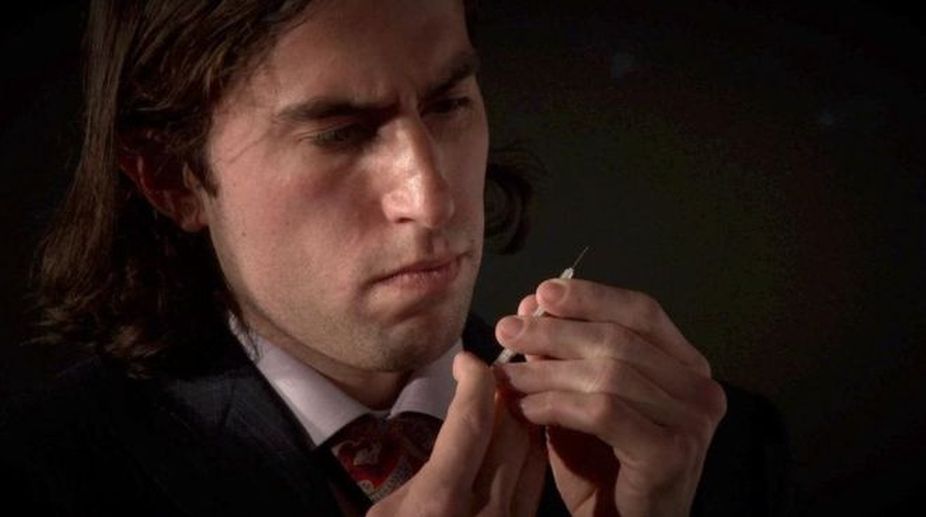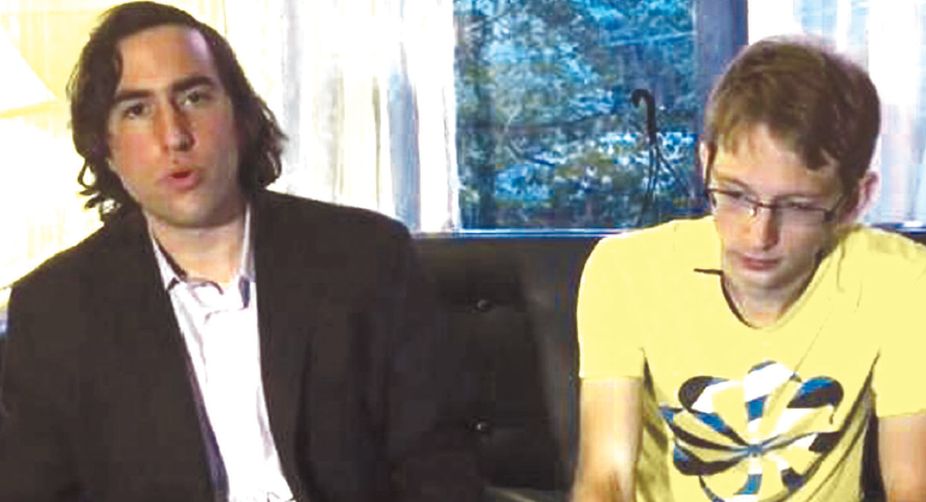Eat plain yoghurt to lower diabetes risk, combat insulin resistance: Doctors
Regular consumption of plain yoghurt may help people to reduce their risk of diabetes and also reduce insulin resistance, said doctors here on Sunday.
Conspiracy, paranoia and scandal surround the death of Aaron Traywick, a biohacker, who had injected himself live on stage at an event in Austin, Texas with an untested gene therapy that he claimed could cure herpes.

Aaron Traywick founded Ascendance Biomedical, a biohacking company that encourages people to conduct medical research outside the pharmaceutical industry.
On the morning of 29 April, staff at the Soulex spa in Washington DC discovered the lifeless body of one of its clients lying face down in a sensory deprivation tank. The body was that of 28-year-old Aaron Traywick, who less than three months earlier had injected himself live on stage at an event in Austin, Texas, with an untested gene therapy that he claimed could cure herpes.
Stories soon spread about the discovery of Traywick’s body, with some inferring a potential link between the DIY herpes treatment and his untimely death. But those who knew the young entrepreneur and were familiar with the work he did suspected something much more sinister.
Advertisement
Traywick was part of a fringe but steadily growing community known as body hackers – or biohackers – whose modest goal is to cure disease, end ageing and ultimately stop death. “Why this test is so important,” he said on stage in Austin, just before injecting himself in the leg with the therapy, “is because if we succeed with herpes in even the most minor of ways, then we can move forward immediately with cancer.”
Advertisement
To get around costly and slow drug approval processes with authorities such as the US Food and Drug Administration (FDA), biohackers like Mr Traywick are willing to test experimental therapies on themselves. But in their bid to accelerate humanity’s transition to a future outside of natural evolution, some within the community fear powerful entities may be out to get them.
“I immediately thought of an FDA conspiracy theory when I heard Aaron was found dead,” Zoltan Istvan, a noted futurist who is currently the Libertarian candidate for governor of California, tells The Independent. “Our medical system is not one to find cures, but to keep people alive as long as possible while sick to make money off them.”
Both Istvan and Traywick worked together in 2015 and 2016 for the Transhumanist Party, a political organisation in the US whose policies aim to improve humanity through radical science and technology. This can often involve circumventing established authorities and major pharmaceutical corporations through processes such as biohacking.
“Aaron was a transhumanist star and his escapades had pushed him into the public eye,” Istvan says. “Can you imagine what would happen to big pharma if transhumanists like Aaron are in charge? We might arrive at a day when there is no disease and no death, and that makes someone like him very dangerous.”
Another associate of Traywick’s, Tristan Roberts, was also initially sceptical. As a fellow biohacker, Roberts knows the risks involved with untested gene therapies into his body, having made headlines in November 2017 after injecting himself with a purported treatment for HIV live on Facebook. Sat next to him as he placed the syringe into a roll of fat above his belly button that day, was Traywick. Neither of them have a background in biology or medicine.

“Aaron’s death seemed suspicious,” Roberts, who has since returned to conventional medicine to treat his HIV, says. “I have always felt that the threat from humans profiting off of the status quo was greater than the experimental therapies themselves.”
The FDA refused to comment on the conspiracy claims, but a spokesperson shared a link to a web page published by the federal agency shortly after Roberts’ public self-experimentation.
“[The] FDA is aware that gene therapy products intended for self-administration and ‘do it yourself’ kits to produce gene therapies for self-administration are being made available to the public,” the web page states. “The sale of these products is against the law. [The] FDA is concerned about the safety risks involved.”
The Washington spa where Traywick died, which describes itself on its website as “a relaxing space for rejuvenation and transcendence”, also declined to comment on the circumstances of his death, but the Metropolitan Police Department of Columbia said in a statement that there was no evidence to suggest foul play. A cousin of Traywick told The New York TImes that police found the drug ketamine in his pockets.
But an FDA or big pharma hit job isn’t the only conspiracy theory being floated by biohackers since his death. Traywick was a controversial and divisive figure within the biohacking community and through his antics had amassed both avid followers and acrimonious disputes. As the CEO of Ascendance Biomedical, the startup behind the experimental therapies used on himself and Roberts, Traywick had upset fellow biohackers with an approach that was unorthodox, even by their standards.
“He used the C-word a lot – ‘cure’ – which means any treatments that are being developed immediately become subject to FDA oversight,” says Rich Lee, a former friend and business partner Traywick who has been involved with biohacking since 2008.
The pair had first come in contact with a device being developed by Lee called the Lovetron 9000 – a vibrating implant for men designed “to enhance the shared experience of lovemaking”. Traywick initially offered investment but the business relationship eventually broke down and the two men parted ways. According to Lee, the entrepreneur had “ripped off partners, ripped off researchers and ripped off the public”. He also allegedly owed money to fellow biohackers.
“Big pharma and government conspiracy theories started springing up after his death but my first instinct was that he’d faked his own death and fled the country,” Lee says. “Given the controversy surrounding him, some people suspected it could have been a hit, that another biohacker could have done it. And it does look pretty suspicious. From the outside, you’d point to a feud between biohackers.” Traywick often compared himself publicly to pioneers of modern medicine such as Jonas Salk and Louis Pasteur, and even despite his controversial character many within the biohacking community still see him as a force for good in this nascent field.
“For a while, I saw some biohackers attacking Aaron with success over his publicity pushes,” Istvan says. “He was a provocateur. However, that is a great trait of a transhumanist and CEO, so I always welcomed it.
“Sure, Aaron wasn’t perfect and he was young, and maybe naive about the science he claimed to be working with, but transhumanists are adventurers – in the field of biohacking especially.”
Whatever mystery remains of his death will be settled once an autopsy of his body is completed in the coming weeks. It is not clear whether or not his body will go to medical research, but his mother Rita Traywick says he was an organ donor. “At the time we were informed of his death, I did not think of this,” she says.
Even if his company’s HIV or herpes treatment did not prove successful, his death served to draw attention to gene therapies and biohacking – a feat he spent the latter part of his life trying to achieve.
“Aaron helped to elevate the idea of accessible gene therapy; an idea which will surely percolate through the human subconscious before erupting,” Roberts says. “In many ways, though, Aaron’s life is an example of how not to organise biomedicine. Good intentions can only get one so far.”
Advertisement